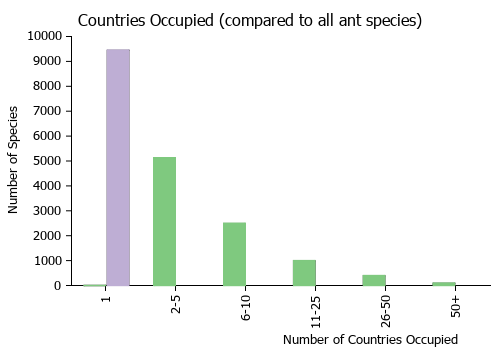Tapinoma yacoubi
| Tapinoma yacoubi | |
|---|---|

| |
| Scientific classification | |
| Kingdom: | Animalia |
| Phylum: | Arthropoda |
| Class: | Insecta |
| Order: | Hymenoptera |
| Family: | Formicidae |
| Subfamily: | Dolichoderinae |
| Genus: | Tapinoma |
| Species: | T. yacoubi |
| Binomial name | |
| Tapinoma yacoubi Sharaf, 2022 | |
The type locality of this species, Baljurashi, is a woodland forest at Al Baha Province with a mean temperature of 2°C during winter and 32°C during summer. It is characterized by the presence of water streams formed in the valleys during rainy season and the soil frequently has a high degree of humidity. The most dominant wild plants in the locality are: Juniperus procera Hochst. Ex Endle (Cupressaceae), Acacia origena A. Hunde (Fabaceae), Acacia negrri Pichi-Sermoli (Fabaceae), and Solanum sp. (Solanaceae). The holotype and the paratype were collected by sifting leaf litter next to Acacia tree, no additional material was encountered despite extensive surveys in the area over years of collecting in the region. Some other ant species were coexisting with the new species including Crematogaster chiarinii, Trichomyrmex mayri, Monomorium salomonis, Monomorium exiguum, Tetramorium sericeiventre and Lepisiota obtusa.
Identification
This new species is diagnosed by the following combination of characters:
- anterior clypeal margin slightly concave concealing about half of mandibles, and posterior margin distinctly concave
- body surface unsculptured and relatively shining
- frontal carinae entirely lack standing setae
Among the Arabian Tapinoma, T. yacoubi appears closest to Tapinoma simrothi but it can be readily separated by the shallowly concave anterior clypeal margin whereas T. simrothi has a deep median clypeal notch. Tapinoma yacoubi looks most similar to Tapinoma luridum from the Democratic Republic of Congo. The two species are similar in colour, body measurements, and the possession of relatively large eyes, long scapes that surpass posterior margin of head, convex outline of promesonotum and mesonotum, deeply impressed metanotal groove, and broad obtuse angle between the propodeal dorsum and declivity. However, T. yacoubi can be easily separated by the lack of setae on the frontal carinae, the convex posterior margin of clypeus, the single pair of black based setae on the anterior clypeal margin, and the unsculptured body surface. Tapinoma luridum has a single pair of black based setae at the midlength of the frontal carinae, a flat posterior clypeal margin, two pairs of black based setae at the anterior clypeal margin, and the body is faintly but characteristically reticulate-rugulose. Among the Arabian Tapinoma, yacoubi is readily recognized by the sharply depressed metanotal groove that has an obtuse angle in profile.
Distribution
Latitudinal Distribution Pattern
Latitudinal Range: 19.8° to 19.8°.
| North Temperate |
North Subtropical |
Tropical | South Subtropical |
South Temperate |
- Source: Sharaf & Aldawood, 2022
Distribution based on Regional Taxon Lists
Afrotropical Region: Saudi Arabia (type locality).
Distribution based on AntMaps
Distribution based on AntWeb specimens
Check data from AntWeb
Countries Occupied
| Number of countries occupied by this species based on AntWiki Regional Taxon Lists. In general, fewer countries occupied indicates a narrower range, while more countries indicates a more widespread species. |

|
Estimated Abundance
| Relative abundance based on number of AntMaps records per species (this species within the purple bar). Fewer records (to the left) indicates a less abundant/encountered species while more records (to the right) indicates more abundant/encountered species. |

|
Biology
Castes
Nomenclature
The following information is derived from Barry Bolton's Online Catalogue of the Ants of the World.
- yacoubi Tapinoma yacoubi Sharaf, in Sharaf & Aldawood, 2022: 2, fig. 1A-D (w.) SAUDI ARABIA (Al Baha).
Type Material
- Holotype: Worker; SAUDI ARABIA: Al Baha Province, Baljurashi Forest (19.8055°N, 41.7119°E), 1930 m, 21.ix.2011 (leg. M. R. Sharaf), Acacia/Juniper woodland, deposited at King Saud University Museum of Arthropods, Riyadh, Kingdom of Saudi Arabia (KSMA).
- Paratype: One worker with same data as the holotype except the collector B.L. Fisher, deposited at California Academy of Sciences, San Francisco, USA (CASC, CASENT0262441).

